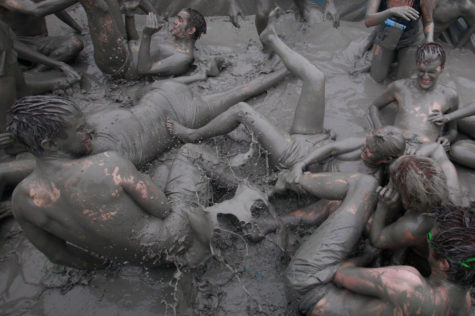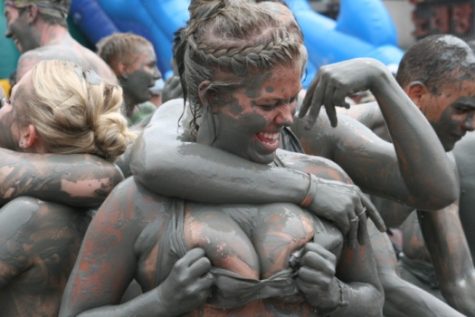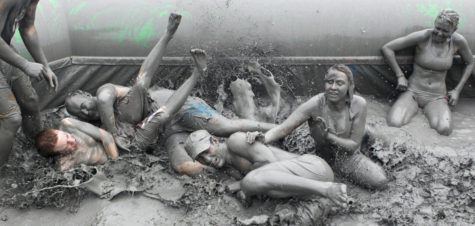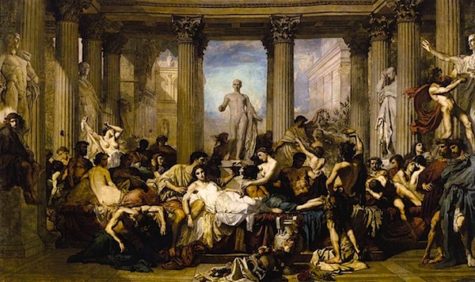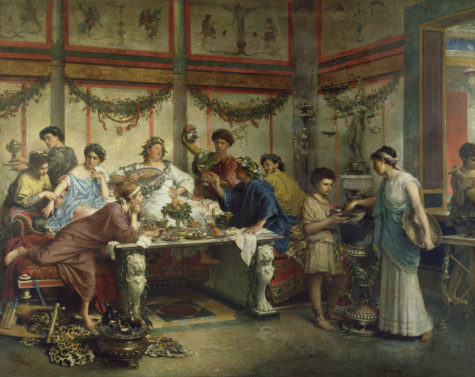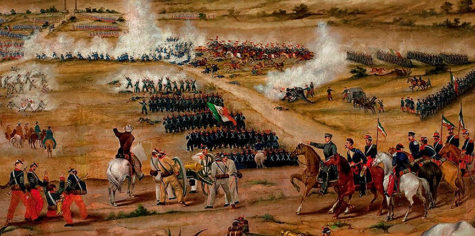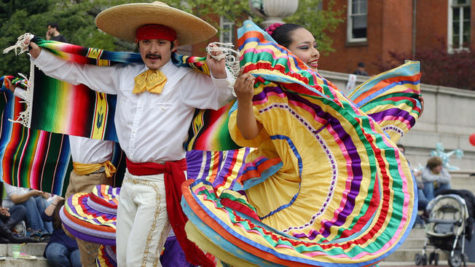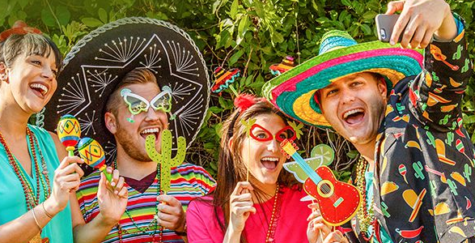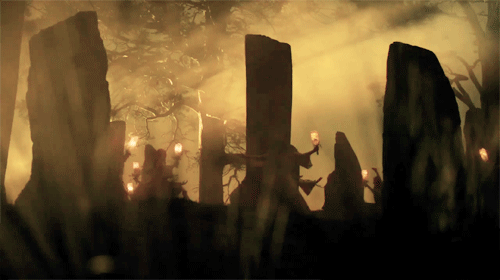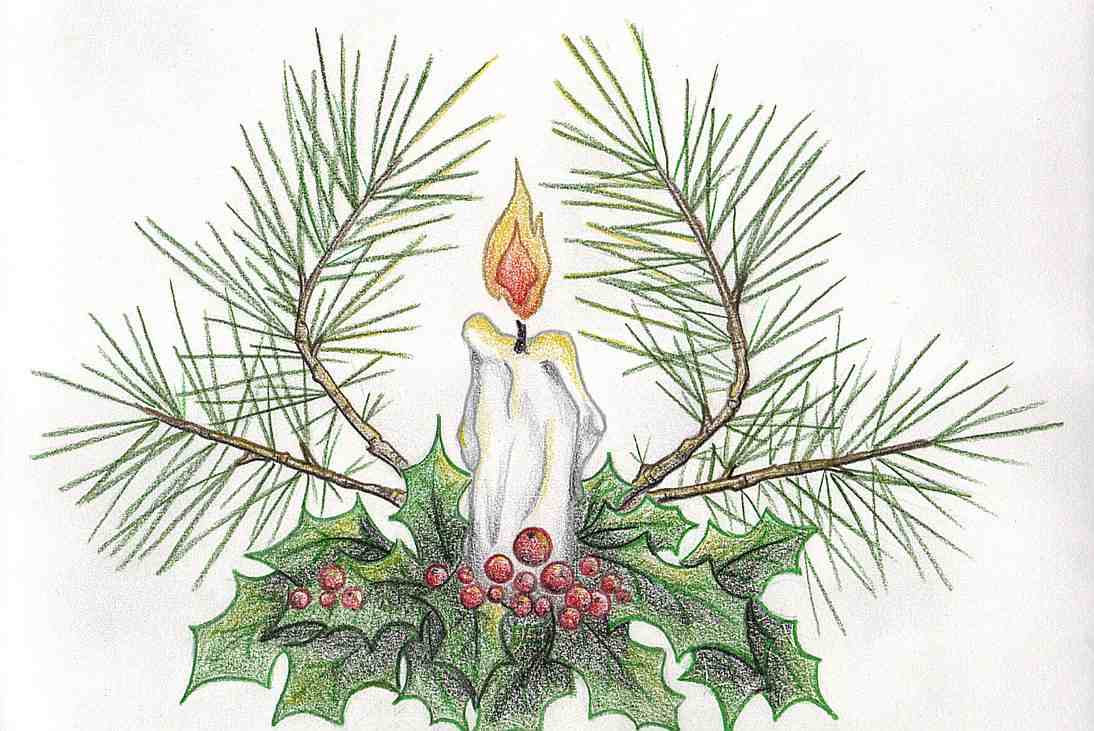Wild Parties
Boryeong, South Korea: The mud trucked in to Daecheon Beach for the festival is said to have cosmetic effects, but that isn’t why 2 million or so ex-pats, locals and tourists muck it up, slathering themselves in mud while slinging beer and soju in Ziploc bags. It’s just down-and-dirty fun. There’s also mud-skiing, a mud king contest, as well as fireworks at night. Tip: take a dip before you leave.
About This Festival
Getting dirty has never been so much fun. Beauty product for some, excuse to channel their inner child for others, Boryeong Mud means many things to many people. This filthy festival involves wrestling, sliding, massages, and photo contests. The dates vary from year to year. In 2016, it was held July 16 thru July 24.
A Dirty Marketing Idea is Born
The idea for the festival began in 1998 as a promotion for the mineral-rich mud found near Boryeong, South Korea. When the manufacturers of Boryeong Mud products determined the beneficial effects of their local mud, they invited visitors to slather themselves in the stuff. The event took on a life of its own rather quickly, attracting thousands of visitors to this otherwise sleepy town annually for the beach, the warm weather, and, of course, the mud.
Things Get Dirty Fast
Fueled by word of mouth, good times and exceptional photographs of mud people, the festival has become an international phenomenon. Families picnic under beach umbrellas, toddlers splash in the kid-friendly area, and the under-30 crowd (generally traveling English teachers, members of the military, and students) are the front-and-center partiers inside an inflatable mud wonderland. Festival-goers have their pick of competitive activities like the Mr. Mud contest, mud wrestling, mud races and even a mud boot camp. Those looking for a more laid back experience can opt for mud facials, body painting, pottery demos, soap-making and lounging on Daecheon Beach.
There’s no need to worry about getting all this gooey grey mud out of your hair, either: showers are abundant and available for a modest fee, as are lockers that can be used to store a fresh and clean outfit. Rinsing off in the ocean is also an option, albeit a less effective one if you plan to impress after your mudbath. Finally, after you’ve wallowed in Boryeong’s thick gray ooze, you can pick up some of the local beauty products, including mudpacks, mud shampoo, mud soap, mud sunblock – remember, this was the original intention of this festival!
More Than Just Mud
Although the main attraction is, of course, the mud, Boryeong features an impressive entertainment lineup as well. Pop and hip-hop performers from around the world affirm its status as an international event, providing an eclectic soundtrack to the wet and wild madness. Don’t miss the huge global rave on the evening of the closing ceremonies, or Friday’s Korean b-boy show. Keep your eye out for opening and closing night fireworks, as well as parades and other cultural performances during the week.
In the end, the thing that sets Boryeong apart is the mud play. The spirit of conviviality across cultures and ages is a function of the anonymity everyone experiences while covered in mud. As Jae-Sang Lee, Director of Korea Tourism Organization, says, “The most distinctive point of the Festival is to create a united place where people from all over the world come together, meet and interact with strangers and are able to break down walls of age, nationality, race and have fun together and leave with memories and new friends.” All are one under the mud.
Sources:
Everfest
Samuitimes
Mud Festival – The official page
In ancient Egypt, the saving of mankind was commemorated every year on the feast day of Hathor/Sekhmet (Jan 7). Everyone drank beer stained with pomegranate juice and worshiped
“the Mistress and lady of the tomb,
gracious one,
destroyer of rebellion,
mighty one of enchantments“
A statue of Sekhmet was dressed in red facing west, while Bast was dressed in green and faced east. Bast was sometimes considered to be Sekhmet´s counterpart (or twin depending on the legend), and in the festival of Hathor they embodied the duality central to Egyptian mythology. Sekhmet represented Upper Egypt while Bast represented Lower Egypt.
- Note:
The dates for this feast day vary widely. In the book, Festivals of Light, August 7 is given as the Inebriety of Hathor, with a similar description of the festivities.
Saturnalia was an ancient Roman festival in honor of the deity Saturn. Originally it was held on 17 December of the Julian Calendar, but the party later expanded with festivities through to 23 December. The poet Catullus called it “the best of days”.
Saturn being an ancient national god of Latium, the institution of the Saturnalia is lost in the most remote antiquity. In Roman mythology, Saturn was an agricultural deity who was said to have reigned over the world in the Golden Age, when humans enjoyed the spontaneous bounty of the earth without labor in a state of innocence. The revelries of Saturnalia were supposed to reflect the conditions of the lost mythical age, not all of them desirable. The Greek equivalent was the Kronia.
Falling towards the end of December, at the season when the agricultural labors of the year were completed, it was celebrated by the country-people as a sort of joyous harvest home, and in every age was viewed by all classes of the community as a period of absolute relaxation and unrestrained merriment. The festival was extended in later times to three and still later to seven days.
During the celebration of this holiday no public business could be transacted, the courts were closed, war was suspended, all private enmities were for the time forgotten, and the city was alive with hilarity. On this day the slaves feasted and were waited upon by their masters, as the female slaves were waited upon by their mistresses on the Matronalia.
The special feature of the festival was the gift of wax candles and of little images of wax or clay called sigilla. The public festival, in the time of the republic, was for only one day; but for seven days the celebration continued in private houses.
Many of the customs of the Roman Saturnalia were taken over by the Christian Church in celebrating Christmas. Thus the origin of the Christmas-tree, and the custom of making presents to children and friends may be traced back to the Roman Saturnalia, while the Yule-log and Yule-fire are remnants of ancient sun-worship, one of the Roman festivals in honor of the Sun god being celebrated on the 25th of December as “Dies Natalis Solis Invicti.”
Although probably the best-known Roman holiday, Saturnalia as a whole is not described from beginning to end in any single ancient source. Modern understanding of the festival is pieced together from several accounts dealing with various aspects.
Here’s some History:
Saturnalia festivities began with ritual and sacrifices in the Temple of Saturn. The statue of the god was hollow and filled with olive oil, as a symbol of his agricultural functions. His feet were bound with woolen strips, that were unbound at Saturnalia.
After the rituals, the Senators (who had to be present) dismissed the crowd with the cry of “Io, Saturnalia!”, a sign for the happy festivities of family parties and other private gatherings to begin. The traditional gifts were wax tapers and little dolls, although gifts of silver later became traditional.
The custom of the Lord of Misrule was appropriated and survived through to English Christmas traditions.
The biggest part of Saturnalia was attitude more than decoration. Feasting, drunkenness, merrymaking, hopefully the conception of more children (or at least enjoying those activities which led to conception!), pranks, gift giving, role reversals (not true ones, only symbolic ones – slaves weren’t really free to make a freedman’s decisions and anything they did or decreed would reverse at the end of Saturnalia, children weren’t really adults and could not enter into any binding contracts or make business deals, etc.) and so forth.
The role reversals seemed to be more for minor privileges – slaves and children got to be waited on for meals, and to lead the rituals, and to participate in the revelry as if they were their parents/masters. The parents/masters jokingly played the part of slaves and children by waiting on them and making rude and bawdy jokes at their expense. Sometimes, it descended into cruelty.
Many of the decorations involved greenery – swathes, garlands, wreaths, etc – being hung over doorways and windows, and ornamenting stairs. Ornaments in the trees included sun symbols, stars, and faces of the God Janus. Trees were not brought indoors (the Germans started that tradition), but decorated where they grew.
Food was also a primary decoration – gilded cakes in a variety of shapes were quite popular, and children and birds vied for the privilege of denuding the trees of their treats. The commonest shapes were fertility symbols, suns and moons and stars, baby shapes, and herd animal shapes (although, to be honest, it’s hard to tell if some of those ancient cookie cutters are supposed to be goats or deer). I would imagine coins were also a popular decoration/gift.
People were just as likely to be ornamented as the trees. Wearing greenery and jewelry of a sacred nature was apparently common, based on descriptions, drawings, and the like from the era. Although the emphasis was on Saturn, Sol Invictus got a fair share of the revelry as well.
On a modern note:
This ancient midwinter festival falls at the time when non-Romans are celebrating Christmas, Hanukkah, Solstice and/or Kwanzaa. In Nova Roma, individual Citizens have chosen different approaches to the challenge of celebrating in the spirit of Rome without cutting themselves off from the culture in which they live.
Gold, because the sun is yellow, is always a sure choice for a good Saturnalia decoration. For modern Saturnalia, those golden glass ball ornaments are ideal, as are gold sun faces, gold stars, and gilded anythings. Gilding nuts and pine cones and nestling them among the swags and wreaths of greenery would be a lovely way of acknowledging the ancient roots of this ceremony.
Indoor trees are not ancient Roman, but if you have plants growing indoors, decorating them would certainly be in the spirit of the holidays. If you just have to have the now-traditional indoor tree, try decorating it in gold ornaments with a solar theme. Swathe it in bright red or purple ribbons (2 colors quite in favor with the Romans, and looks great with the gold ornaments). Top the tree with a sun, rather than a star, for after all, this is a solar celebration.
Wild parties with lots of food and drink is good. Letting the children of the household lead the common rituals, and waiting on them (assuming you don’t do so in everyday circumstances….) at mealtimes, and deferring to them in decisions on party ideas would work for role reversals.
No children in the house? Maybe you can borrow one for a day. We don’t have slaves, but, for a nice touch of role reversal, we could purchase the services of a nanny or a housekeeper for the duration of Saturnalia. It would be a role reversal of sorts, for instead of being the slave of your home, someone else would be doing the chores and cooking and childcare while you got to party down!
Dancing and singing in the streets is now frowned upon, unless you can get a parade permit. A parade, if you could organize it, would be fun. Imagine – giant floats of the Gods tended by the priests and acolytes, musicians and dancers, contortionists to amaze and delight, acrobats and jugglers, all in honor of Saturn!
For a compilation of Saturnalia celebrations reported by Nova Romans, visit Saturnalia practices of Nova Romans.
Brumalia is an ancient Roman winter festival incorporating many smaller festivals celebrating Saturn, Ops and Bacchus. The word Brumalia comes from the Latin bruma meaning “shortest day.” By the Byzantine era, celebrations commenced on 24 November and lasted for a month, until Saturnalia and the “Waxing of the Light.” It is said to have been instituted by Romulus, the legendary founder of Rome.
According to 6th century historian John Malalas1, Romulus entertained his Senators, army and staff throughout the month, assigning each day a letter and inviting those whose names began with the assigned letter to dinner parties. He also encouraged his Senators to likewise entertain their friends and staff in the same manner. According to John the Lydian, sacrifices were made of pigs to Demeter and Cronus and goats were sacrificed to Dionysus2 and speculates that Cronus is honored at this time because of his banishment into the darkness of Tartarus.
The festival marked a break for the Senate and included night-time feasting, drinking, and merriment. During this time, prophetic indications were taken as prospects for the remainder of the winter. It also incorporated a number of smaller holidays associated with various Gods.
Some people celebrated Brumalia by sacrificing goats and pigs, while devotees of the god Dionysus inflated goat skins and then jumped on them. It is also believed that each day of the festival was assigned a different letter of the Greek alphabet, starting with alpha (α) on November 24 and finishing with omega (ω) on December 17.
The festival was celebrated as late as the 6th century, until emperor Justinian’s repression of paganism.
Some modern Pagans use the word Brumalia to simply indicate the winter holiday season including all of its various festivals and activities. This seems quite in keeping with the spirit of the ancient use of the word.
Source: Wikipedia and Witchipedia
The holiday of Cinco De Mayo, “The Fifth of May”, celebrates the victory of the Mexicans over the French army in 1862.
Shortly before the battle on May 5th Benito Juarez announced to his people:
The government of the republic will fulfill its duty to defend its independence, to repel foreign aggression, and accept the struggle to which it has been provoked, counting on the unanimous spirit of the Mexicans and on the fact that sooner or later the cause of rights and justice will triumph.
At the same time General Lorencz stated to the French government:
We are so superior to the Mexicans in race, in organization, in discipline, in morality, and in refinement of sensibilities, that as of this moment, at the head of our 6,000 valiant soldiers, I am the master of Mexico.
The battle lasted from daybreak to early evening, and when the French finally retreated they had lost nearly 500 soldiers. Fewer than 100 Mexicans had been killed in the clash.
And so it was that on May 5th the outnumbered, untrained, and ill-equipped Mexican people defeated the formidable French army. The success was unimaginable and was won with the determination and spirit of the Mexican people. However, victory was short lived and within a year France had successfully conquered Puebla and the rest of Mexico. They ruled there until 1867.
Cinco de Mayo celebrates the courage of the Mexican people during the battle on May 5th. It is often confused with the Mexican Independence Day, which occurred September 16, 1810 about 50 years earlier. A relatively minor holiday in Mexico, in the United States Cinco de Mayo has evolved into a commemoration of Mexican culture and heritage, particularly in areas with large Mexican-American populations.
Nifty Cinco de Mayo Party Ideas
- Send a Themed Invite –
Let everyone know right off the bat that this is a fun, festive fiesta by making sure your invitation reflects your theme. You might even want to send an online sign up to make it a potluck so people can share their favorite dishes.
- Create a Sombrero Centerpiece –
Set a sombrero on top of a tall vase or glass to give it height and fill the rim of the hat with fun, colorful treats.
- Spice It Up –
Fill the table with clear vases and margarita glasses that are filled with brightly colored yellow, red and green peppers.
- Get Colorful Silverware and Paper Products –
Think red cups, green forks and knives and white napkins — then you’ve got the colors of the Mexican flag covered!
- Reuse Containers –
Another alternative for an easy centerpiece is to buy canned Mexican food such as beans (put the food in an alternative container or cook it as part of your feast) and fill the cans with big, bright blooms.
- Make a Traditional Mexican Banner –
Papel picado (perforated paper) is a traditional Mexican folk art. It’s a decorative craft that involves cutting out intricate patterns on colorful tissue paper. Fold the tissue paper horizontally, then fold it over again. Use scissors to cut shapes in the paper. (It’s kind of like cutting paper snowflakes.) Once you have cut enough little patterns, unfold the paper.
- Red, White and … Green –
We’re all used to dressing in red, white and blue to celebrate July 4, why not get co-workers or party goers to dress in red, white and green for May 5? (The colors of the Mexican flag.)
- Create a Playlist of Mexican-themed Music –
You can go classic with authentic Mexican music or cue up some favorite Mexican-American artists like Carlos Santana and Selena.
- Hire a Mariachi Band –
Nothing gets people more in the mood to celebrate Mexican heritage than an actual, live Mariachi band. Everybody loves the serenade at the local Mexican dive restaurant, so if you really want to impress your guests, have a band come play in person.
Recipes and Food for Cinco de Mayo
- Flag Food –
Make a festive spread of your dips using salsa (red), queso blanco (white) and guacamole (green).
- Cinco de Mayo Fruit Cup –
With a squeeze of lime juice and a dusting of chili powder, slices of papaya, cantaloupe, mango, watermelon and pineapple take on a new depth of flavor perfect for this caliente holiday.
- Build Your Own Taco Bar –
Grab hard and soft shells and loads of toppings — think shredded cheese, meats, grilled veggies, Mexican rice, lettuce and more, and have guests build their own tacos. You could also do this with nachos.
- Cinco de Mayo Strawberries –
Easy and eye-catching, the kids can help you turn strawberries into the Mexican flag. Dip the red treats into melted white candy and top with green sprinkles. Enjoy!
- Piled High Nachos –
Grab your favorite bag of tortilla chips and spread evenly over a baking sheet. Add a mix of cheddar, Colby and Monterey Jack cheeses (shredded). Now add toppings of your choice. (That can mean ground beef, pork or chicken, black olives, tomatoes, corn, etc.) Bake at 400 degrees for five to 10 minutes (until warm). Then serve with sour cream, salsa or guacamole.
- DIY Pico De Gallo –
Take four chopped medium tomatoes, ¼ cup diced white onion, two seeded and minced jalapeno peppers, two tablespoons chopped green bell pepper, one clove minced garlic, ¼ cup chopped cilantro leaves, two tablespoons of fresh lime juice, a dash of salt and pepper and mix it all together. Refrigerate for an hour before serving.
- Mexican Rice Mashup –
This easy recipe will serve everyone at your party. Brown one pound of ground beef and combine with taco seasoning. Then in a cast iron skillet, sauté ½ tablespoon olive oil and ¼ cup of white onion diced. Add in four cups cooked rice, one cup black beans, one cup of corn, one cup of red peppers, one cup of green peppers, one diced tomato, and ½ cup of cilantro and mix with the ground beef. Then squeeze the juice from ½ of a lime over the dish.
- Watermelon Jicama Salad –
Slice half a watermelon into bite-size chunks. Combine that with one to two cups diced jicama, one mango (peeled and diced), one small bunch of chopped cilantro leaves, the juice of two limes, one teaspoon of salt, ¼ to ½ teaspoon black pepper and mix all the ingredients in a large serving bowl. Cover and refrigerate. Serve cold.
- Cheesy Enchilada Bake –
Brown one pound of ground turkey or beef and sauté with 1/3 cup of chopped white onions. Add a 15-ounce can of enchilada sauce. Separate the dough of a 16-ounce can of refrigerated biscuits into chunks and add to the meat. Put the mixture into a baking dish and top with 1½ cups of cheese. Bake at 350 degrees for 30 minutes. Garnish with green onions.
- Easy Quesadillas –
Place one large flour tortilla in a skillet with a little bit of oil, when it begins to brown add grated cheese (cheddar or Monterey Jack) and other ingredients. (You can add mushrooms, green onions, fresh tomatoes, avocado, lettuce and more.) Fold the tortilla in half, cook a little bit longer (until completely browned) and serve.
- Hot, Hot Mexican Zucchini –
Spray a large skillet with cooking spray, bring to medium heat. Add one garlic minced clove and heat until it sizzles. Add one pound of diced zucchini and cook until tender (about three minutes). Add one large diced tomato and one sliced green onion and cook for three more minutes. Remove skillet from heat, add one tablespoon fresh minced cilantro, jalapeno and fresh lime juice. Top with ½ cup feta cheese crumbles.
- Corn Salad –
Mix two 16-ounce frozen bags sweet corn (thawed), two large tomatoes (chopped), one Vidalia onion (chopped), ½ cup fresh cilantro (chopped), ¼ cup extra virgin olive oil, the juice of one lime, one 14-ounce can black beans (drained and rinsed) and a dash of salt and pepper. Once mixed well, let it stand and serve at room temperature.
- Mango and Avocado Salsa –
Combine one mango and one avocado (peeled, pitted and diced), four medium tomatoes, one jalapeno pepper (seeded and diced), ½ cup chopped fresh cilantro, three cloves minced garlic, one teaspoon salt, two tablespoons fresh lime juice, ¼ cup red onion (chopped) and three tablespoons olive oil in a medium bowl and stir well. Refrigerate before serving with chips.
- Easy Guacamole –
In a medium bowl mash together three avocadoes, the juice of one lime, and one teaspoon of salt. Mix in ½ cup of a diced onion, three tablespoons chopped fresh cilantro, two tomatoes and one teaspoon of minced garlic. Stir in cayenne pepper. Refrigerate for one hour or serve immediately with chips.
- Mexican Wedding Cookies –
Preheat oven to 350 degrees. Beat one cup butter (softened), ½ cup powdered sugar and one teaspoon vanilla. Then add two cups flour and one cup chopped pecans. Bake 14 to 15 minutes or until bottoms are lightly browned. Cool five minutes on baking sheets. Roll warm cookies, one at a time, in ½ cup powdered sugar in small bowl until evenly coated.
- Mexican Pineapple Water –
Also known as Agua de Piña, this drink is simple to make. Cut one skinned and cored pineapple into chunks and combine in a blender with two cups of water. Once blended, add two more cups of water and run through a mesh sieve. Add more water and one to two cups of sugar until you reach your desired sweetness and consistency.
- Watermelon Lemonade –
This drink is easy and fun and should fit easily with your party vibe. Mix two cups of watermelon juice (from an actual watermelon) with four cups of lemonade.
- Frozen Watermelon Lemonade –
Create with or without alcohol. Once you have your two juices mixed, pour the half of each juice into ice cube trays and freeze. Take frozen cubes and simply mix with liquids in a blender.
- Strawberry Margarita Punch –
Mix 15 ounces of frozen strawberries, 24 ounces of lemon lime soda and 12 ounces of frozen limeade in a blender, then pour in two cups of orange juice and stir. This cocktail is super refreshing, delicious and literally made in minutes. You can make this with or without tequila.
- Candy Buffet –
Send guests home with a colorful sweet treat in the flag colors. Use Twizzlers or red hots, white chocolate Hershey kisses, green licorice and red and green M&Ms. Set out small bags to scoop the candy into and take home with them.
- Hire a Mexican-themed Food Truck –
Leave the cooking to someone else while your guests enjoy the fun of the food truck!
Games and Activities for Cinco de Mayo
- Scavenger Hunt –
Have guests search for items like a small bag of tortilla chips, a bottle of hot sauce, a sombrero, a mini Mexican flag and more. Make sure the winner gets a fun prize. (Maybe everything they just found!)
- How Hot Is It? –
Arrange chili peppers (or sauces) with different heat levels on a table. Keep track of how hot everything is. Have a few brave souls try them and the rest of the crowd guess how hot they are based on the reactions.
- DIY Piñata –
Use a decorative shopping bag and fill it with candy (and some crinkled up newspaper to fill some space), then tape or staple the shopping bag closed and hang it just high enough so that it’s hard to hit. Blindfold your guests and watch them take a whack at your colorful creation! This works for kids and adults. You can get creative with how you fill the piñata if it’s for kids.
- Pass the Sombrero –
Much like musical chairs, guests pass the hat and when the music stops, the person holding the hat is out. Make things more entertaining by giving contestants the option to do a Mexican hat dance for a chance to get back in the game.
- Mustache Selfie Contest –
Buy packs of different kinds of stick-on mustaches and have guests take fun selfies wearing them. Then decide as a group who took the best photo.
- Nacho Eating Contest –
Blindfold contestants and offer them chips-and-messy-dip and see who can finish the bowl first.
- DIY Maracas –
Get two mini paper cups. Paint and decorate the outside of each one. Then fill one cup halfway with dried pinto beans. Apply hot glue to the top edge of the cup and place the second cup on the glue to create the maraca. Then shake!
- Giant Tissue Paper Flowers Craft –
Cut out circles or squares of different colored tissue paper. Give guests two to three pieces and place them on top of each other. Carefully pinch the layers in the center and secure with a twist tie. Then open out the different layers to reveal a multicolored flower.
- Terra Cotta Pot Decoration –
Have guests use acrylic paint to decorate terra cotta pots with popular Mexican-themed symbols like the flag, the sun, a cactus, sombreros and more.
- Traditional Dancing –
Get your guests shaking more than just their maracas! Bring in a trained professional to teach the group how to samba, salsa, rumba and more.
- Sing It –
If your guests are into performing, rent a karaoke machine and use your playlist as the song choices for some good old-fashioned living room karaoke.
Kid Stuff For Cinco de Mayo
- Make Your Own Poncho –
Lay a paper grocery bag flat on the table. Cut around the outside of it, snipping off the folds. Cut the neck hole by layering the two sections together. Test it on your child’s head to make sure it’s big enough. Staple the area where the two bags meet at the shoulder. Then decorate with bright colored crayons or markers.
- Play the Mexican Lottery (Bingo) –
The Lotería game set includes a deck of 54 cards with colorful images and 10 boards, with a random pattern of 16 images. It’s very similar to American bingo and you can find a Lotería set online.
- Play Ball –
Kickball is a traditional game played in Mexican villages (though it’s a bit different than American kickball) and is great for an outdoor party. Divide partygoers into two teams. The aim of the game is for each team member to kick a ball around an obstacle course and the first team where every member completes the course wins. You can use cones, chairs — anything — to create the obstacle course.
- Mexican Train Domino Game –
Play a game of dominoes where the object is to create a “train” (chain) using all the dominoes in your hand. (You can use a traditional set of dominoes for this version of the game but you will also need to make a “hub” with slots for each players train. You can cut this out of cardboard or buy a fancier set online.
- Speak the Language –
You and your guests can learn some key Spanish phrases from an español-speaking friend to appreciate the culture behind the holiday. (Hola!)
- Make a Word Search –
Use the phrases you just learned to create a custom word search for the kids at your party.
- Play Marbles –
Marbles are still hugely popular in Mexico. Get a variety of marbles in different sizes and colors and let kids play this classic game.
- Pin the Tail on the Donkey –
We’ve all played this game — as kids and adults! Considering the donkey is considered a beloved “hero” in Mexico, it seems like a good day to dig out the classic.
- Play Soccer (Fútbol) –
This popular Mexican sport will help kids burn off some energy. Set up two cones (to form a “goal”) on either side of your backyard and host a friendly game of fútbol. Go the extra mile and have T-shirts made to distinguish the teams.
Sources:
